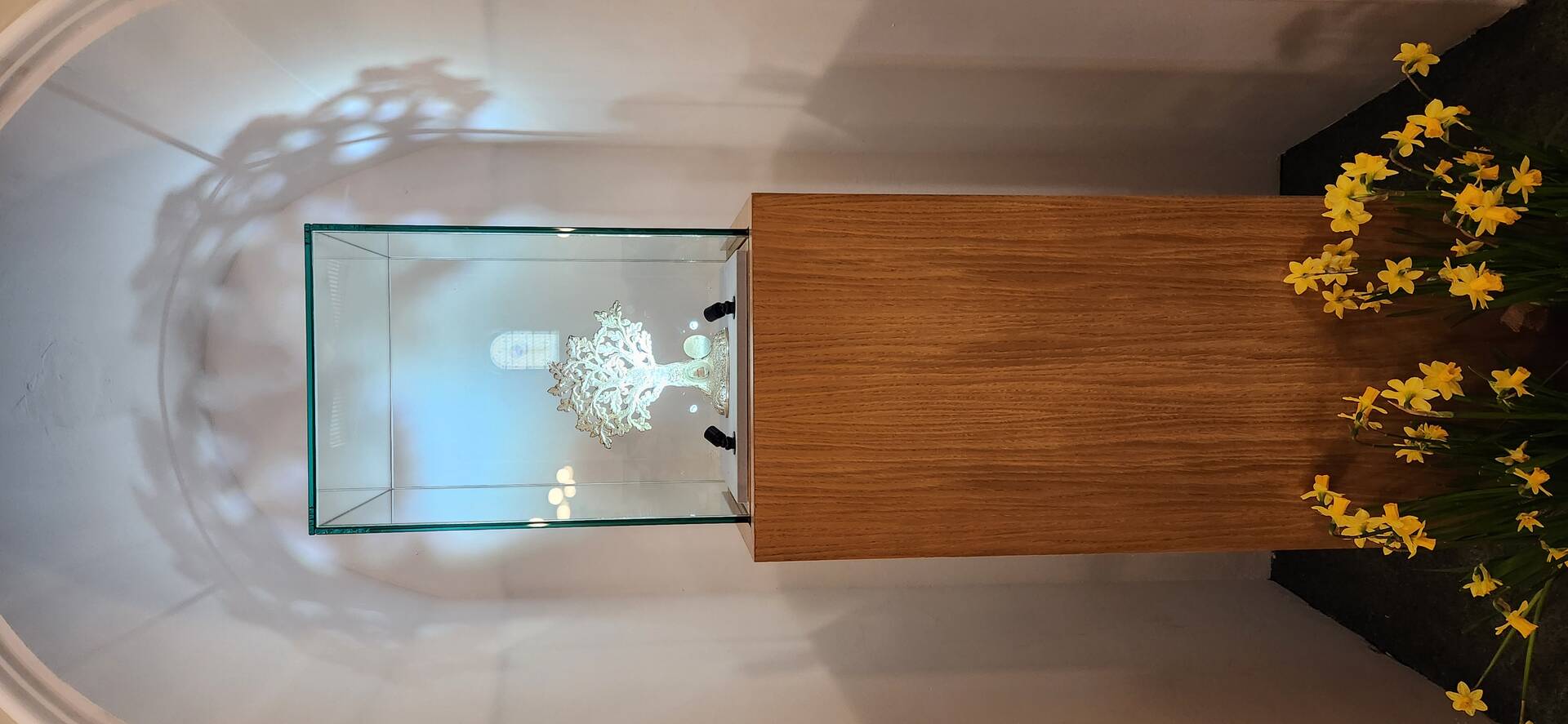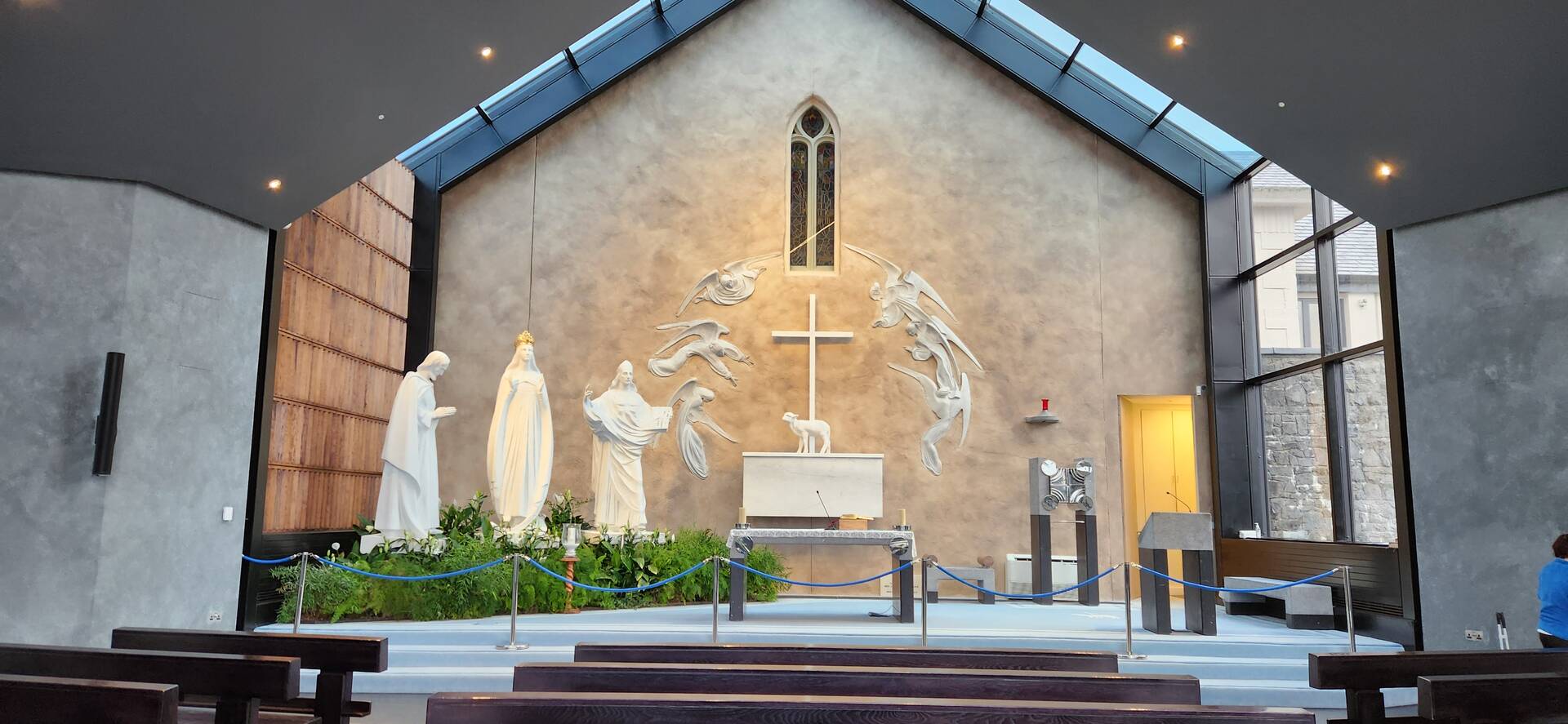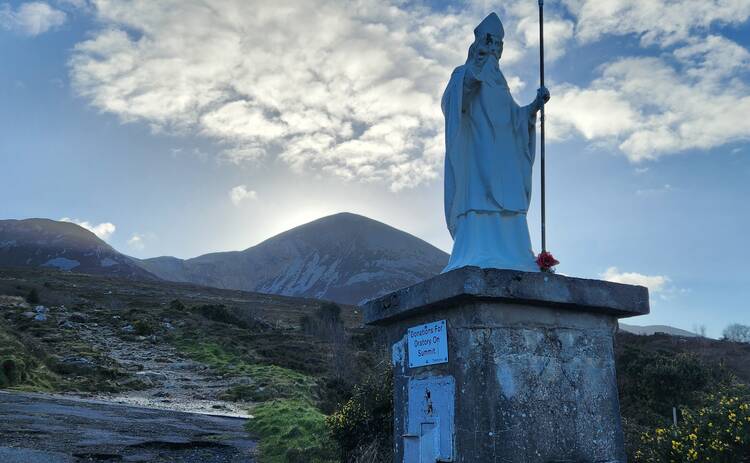I’m half Irish—and proud of it. But I have never been what some of my friends call “professionally Irish,” the kind of Irish-American who knows all the verses of “The Fields of Athenry,” knows the best pub in their ancestral village and can recite the names of all the counties by heart. My dad was Irish (his grandfather emigrated from County Wexford), but he wore it lightly, except on St. Patrick’s Day, when my Sicilian-heritage mother would make spaghetti and meatballs while he feigned outrage, which my sister and I found hilarious.
The first time I visited Ireland was in 2018 for the Vatican’s World Meeting of Families in Dublin, to speak about L.G.B.T.Q. Catholics. I was nervous about the talk (this was the first time that anyone had ever spoken about the topic at the event, and protests were expected), but all went well and my hosts were exceedingly welcoming. I was even able to visit a few Jesuit churches and communities. But it was a brief trip and I didn’t get to know Dublin, much less Ireland. Where was Wexford, anyway?
During lunch at a Jesuit community on that trip, an older Jesuit came to my table and asked four short questions. “Are you James Martin?” Yes, I am. “Is it true that you’re half Irish?” Yes. “And is it true that you’ve never been to Ireland before?” Yes, it is. “I have one final question.” He paused and said, “How can that be?”
He had a point. So I leapt at the chance to return this January, when the Irish Bishops’ Conference invited me to speak with them about ministry to L.G.B.T.Q. Catholics as part of their annual gathering. It was a great honor and a wonderful way to invite reflection on a ministry that has become an important part of my life. Best of all, it was to be in Knock, the site of a Marian shrine.
Only a few months before, I presided at the funeral Mass of the Irish-born mother of a friend, and the cantor sang a haunting hymn. “Golden Rose, Queen of Ireland,/ All our cares and troubles cease/ As we lay our hearts before you,/ Lady of Knock, our Queen of Peace,” went the chorus. Afterward I asked a Jesuit friend who was concelebrating, “What was that hymn?” He said, “I’m surprised you don’t know it! It’s ‘Lady of Knock.’ You hear it at a lot of Irish funerals.” I was eager to explore this devotion on my trip.
St. Brigid’s Return
I took an overnight flight from New York to Dublin and was picked up by a pastoral associate of the bishop of Kildare, Denis Nulty, at whose residence I was soon deposited. Still bleary-eyed (I can never sleep on planes), I was joined by Bishop Nulty, the pastoral associate and another priest for a traditional, massive, heart-stopping Irish breakfast of eggs, rashers (bacon), sausage, hash browns, tomatoes, toast, jam, blood pudding and, of course, tea. Owing to my hunger, it was one of the best breakfasts I’ve ever had.
Bishop Nulty suggested that perhaps I’d like to have a “lie-down,” since he was due to preside at the Sunday Mass to mark 1,500 years since the death of St. Brigid, during which they would be installing her relics at the local church named for her. As an aside, he mentioned that Brigid had lived in Kildare. “Wait,” I said. “It’s her 1,500th anniversary and you’re celebrating a Mass with her relics at her church in Kildare?”
“That’s it!” he said. I couldn’t believe my good fortune. Of course I would come.

In her native Ireland, St. Brigid has been enjoying a moment, revered by Catholics as an abbess and a disciple of St. Patrick. Others celebrate a pagan Celtic goddess named Brigid (after whom the saint may have been named) as a symbol of feminine wisdom. Last year Ireland began honoring Brigid with a public holiday (her feast day is Feb. 1). As a sign of her popularity with all sorts of people, the Irish government issued a stamp for her 1,500th anniversary with two designs: one with the St. Brigid’s cross made from reeds and one with a flame, marking the pagan winter festival of Imbolc, which is also celebrated on Feb. 1.
If one still had any doubt about her appeal, the crowds at the church, (named, of course, St. Brigid of Kildare) proved otherwise. It was packed—a rarity in a country now secularized and still reeling from the sexual abuse scandal and the story of the Magdalene laundries, and where in some places the percentage of weekly Mass attendance among Catholics hovers in the teens.
In his homily, Bishop Nulty talked about Brigid as a sign of hospitality against the backdrop of resistance to migrants in Ireland these days: “It’s too simple to install a relic and leave it at that; she would call us to do much more!” Afterward, dozens of people stood in line in the chilly church to venerate her relics. I was texting photos from the event to a friend back home whose daughter is named Brigid. She texted back, “I’m showing this to my Brigid right now!”
After a quick return to the bishop’s residence, we set off for Knock. The road there wound through smaller towns, with colorful one-story buildings lining the streets. Honestly, I felt like an idiot for not knowing the names of the towns we were passing through or sometimes even how to pronounce them. But Bishop Nulty was not only an excellent driver (on often narrow streets) but a terrific tour guide and one of the nicest people you could meet. We arrived in Knock about two hours later, around dinnertime, to warm greetings from the bishops, both active and retired.
From the parking lot of the Knock House Hotel (by the way, a lovely, quiet place with excellent food) you could see the large, round Basilica of Our Lady of Knock, Queen of Ireland, lit up, a brilliant white against a pitch-black sky. I instantly started humming the hymn from the funeral, which would not leave my head for the next few days. Early the next morning, before our first meeting with the bishops, I hurried over to pray in the basilica and the Chapel of the Apparitions.
Our Lady of Knock
Do you know the story of the apparitions at Knock? In 1879, in the wake of the Irish famine, Mary, St. Joseph, St. John the Evangelist and a lamb atop an altar before a cross appeared before the back wall of the parish church in the small town of Knock. The apparition, which took place in the pouring rain and pitch dark, was witnessed by at least 15 people. One woman tried to embrace the figure of Mary but said that her hands simply passed through the figure, who was hovering above the ground two feet away from the church wall. Since then, Knock has been an important place of pilgrimage. Rare for such apparitions, the centerpiece was not Mary but the Lamb of God; equally rare, none of the figures said anything.
Today the church wall is enclosed by the sleekly modern Chapel of the Apparitions. Praying there, meditating on the mysterious vision and asking for help, was the spiritual highlight of my time in Ireland. I wondered if any of my Irish ancestors had prayed to her.

On the way back to the hotel that morning, I stopped in at the grand basilica. Sometimes large churches designed for huge crowds (as at some shrines) can feel functional or even industrial. But the basilica in Knock, first opened in 1976 and recently renovated, is warm and inviting and prayerful, even though it can seat 10,000 people.
The sanctuary of the church is circular, and its aisles extend like spokes from the center. In some of the supporting walls are openings made to resemble a window from a medieval abbey or priory in one of the four provinces of Ireland: Connacht, Leinster, Munster and Ulster. Monumental statues of Irish saints are stationed around the nave. Outside, the pillars holding up the low, overhanging porch are constructed from stones from each of the country’s Catholic dioceses. Inside, the massive, brilliantly colored “Apparition Mural,” which depicts the visions, was installed just a few years ago. Made in Italy, it is one of the largest mosaics of its kind in Europe. That morning I was alone in the church and able to simply enjoy a beautiful place to pray.
Croagh Patrick
The afternoon of the first day, after I had completed the first of two morning talks—one on Jesus’ outreach to those on the margins, and the second on ministry to L.G.B.T.Q. people—Bishop Nulty asked if I’d like to see Croagh Patrick. I’m embarrassed to say that the only reason I recognized the name was because, the day before I left, a colleague at America Media asked if I was going to climb it. “Crow what?” I said.
Croagh Patrick (meaning St. Patrick’s hill, or stack) is a mountain in County Mayo where, by tradition, St. Patrick spent 40 days in prayer and fasting. Often called the “Reek” (another word for rick or stack), it is not far from Knock. On the last Sunday of July thousands of pilgrims, many barefoot, climb the 2,507-foot mountain as an act of penance and prayer. At the top of the mountain is an oratory dedicated to the saint (a church has been here since the fifth century). We only had time to go a short way up the mountain to a modest stone statue of St. Patrick, where Bishop Nulty and I stopped to pray and look out over the beautiful bay, which leads to the Atlantic, near the towns of Murrisk and Westport. At the foot of the mountain is the haunting National Famine Memorial, a “coffin ship” pointing to America, by the Irish artist John Behan. Our trip, on a clear sunny day, was moving and beautiful.
At tea, some of the bishops told me about another penitential spot: Loch Dergh, an island that is also associated with St. Patrick. Legend has it that Christ showed Patrick a vision of purgatory there. Perhaps more historically reliable is the claim that a monastery existed on the island from as early as the fifth century. Today, it is a popular place for some serious penitential practices, including a three-day fast (or near fast) that begins the night before a pilgrimage begins and ends the night pilgrims return home. All the bishops seem to have made this trip and told me that it is still popular with students about to face exams.
The most memorable feature of my three-day trip, besides the Knock Shrine, was the people. I’m sure there are some grumpy people in Ireland, but I never met them. The bishops could not have been more welcoming or warm, and every single person I met was friendly. Before I left the country on Wednesday morning, driven back to Dublin Airport by a cheerful priest and accompanied by an avuncular archbishop, I realized that I had fallen in love with Ireland.
In the gift shop at the Knock Shrine, I met a woman who encouraged me to try my hand at making some St. Brigid crosses out of “rush,” or reeds, which were laid out on a table. The crosses are, she said, easy to make. But I was in a rush and demurred. Nonetheless, she cheerfully asked if I had been to my great-grandparents’ birthplace, which I had mentioned to her. No, I said, so I guess I’ll have to come back. “Of course you will!” she said.
Correction, 1:36 p.m., March 28, 2024: The name of the Irish artist who crafted the National Famine Memorial was misspelled. His name is John Behan, not John Bevan.








